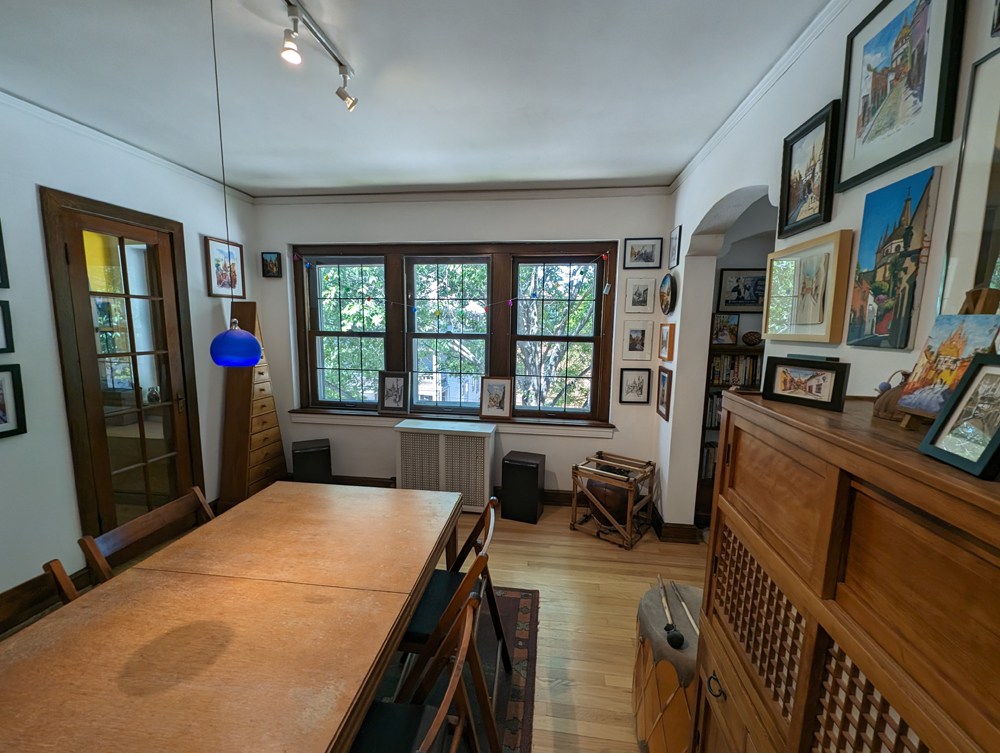 Español
Español
June 23, 2024
by Todd Barnett
Some twenty years ago while having coffee with James Warfield, my thesis professor during architectural studies at the University of Illinois at Urbana-Champaign, I asked "You are a world traveler and as such, where would you suggest I visit for my next vacation?" Jim knew how much I had enjoyed Cuzco, Antigua, and Oaxaca – all places Jim had toured. With decisiveness, he answered San Miguel de Allende.
With an old guidebook and few notes from Jim, I headed to San Miguel for my next getaway. It was 2003, a time when almost all the ex-pats from the United States and Canada who were in San Miguel had gray hair. Now, of course, this colonial town has been more thoroughly "discovered" by tourists from all corners of the globe, and with that, and a lot of younger people living there, the gray is no longer as prominent.
The UNESCO World Heritage City – with its friendly and warm people, architecture, color, food, art, and music - created a feeling of home for me. In total, it took my breath away…so much so that my first visit has become one of twenty. I missed visiting during the pandemic but as soon as I returned, I realized that my need (primal urge) to visit was real – just as it is for my friends and family, many of whom I introduced to this magical place.
As any visitor knows, there are many incredible views here: the Parroquia from a bench at the Jardin, from the Mirador, looking at the Templo de Nuestra Senora de la Salud dome as it rises over Recreo and anywhere along Pueblito. My favorite view is looking at the Parroquia from Calle Aldama.
The Parroquia, formally known as La Parroquia de San Miguel Arcangel, is the city's magical parish church – quite simply the town's icon. Built in the seventeenth century from local pink-hued stone, it was designed by Zeferino Gutierrez, who worked from postcards of French churches. The neo-gothic structure rises high above the Jardin Allende, the town's main public space and can be seen for miles around. The church has numerous steeples, with the two largest flanking the towering center spire. The spire, catching the sunset, is artificially lit up at night, serving as our North Star.

Calle Aldama is a three-block long street framed by continuous rows of one and two-story stucco-faced buildings. The structures are painted in earth tone colors which must be approved by the local historic commission. The stucco is not monolithic but instead has a variety of smooth and textured finishes. The textured portions are typically at the base of the buildings and at slightly different heights. Windows are set in simple, deep openings and frequently framed with cut and carved stone trim and protected by hand-forged steel grills. Streetlamps and gargoyles – often fanciful animals - project from the walls and add to the texture. Stone caps with lush plants and flowers finish off the exterior walls.
Aldama is a very narrow street. The sidewalks – if you can call them that – are more than slender. So slender that when two people approach each other, one often moves to the street with an unspoken etiquette. The street are constructed from cobblestone which, when wet, become slippery. The flagstone sidewalks can also be treacherous when it rains. Shops, homes, and hotels flank each side and if you peek in the doorways, you will discover courtyards full of tropical plants and chirping birds. The street has slight bends at each crossing, adding to its charm.
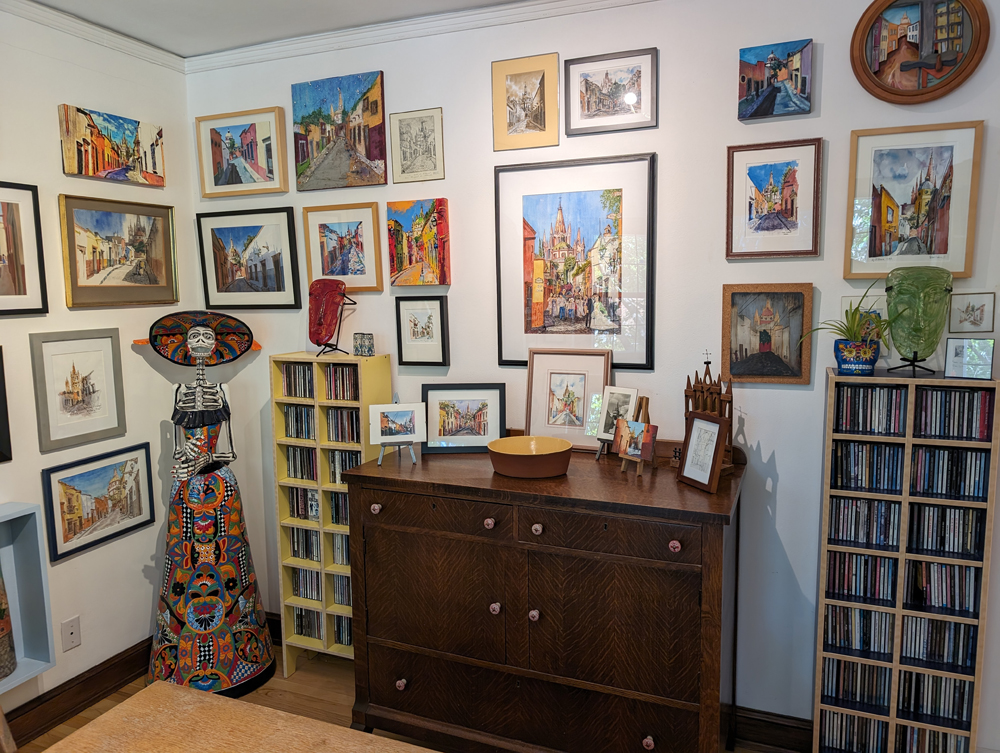
The view from Aldama looking north terminates on the Parroquia. Framed by modest buildings left and right, it soars high and, depending on your vantage point, you may see the church's two domes and many of its steeples. At the end of the street is an arched fountain. Accenting the view is a palm tree, which blows in the gentle breeze. Aldama, to me, is one of the most wonderful streets in the world. It may not light up like the Champs-Elysée, but it makes my soul feel so much better.
The Jardin view of the north and main façade of the Parroquia – do not get me wrong – dramatically shows off the icon in all its glory, but the view from Aldama, to me, tells more of the city and its hidden secrets.
A few years after my first trip I stumbled upon a watercolor on eBay of the Parroquia viewed from Aldama. It was a delight – a thoughtful composition with colors of the rainbow, a late afternoon shadow and people coming and going. I did not expect to be the winning bidder, but I was. The artist was Arnold (Boedie) Boedeker, who served as the art director at Goodyear Tire and Rubber Company. Apparently, he helped design the company's winged foot emblem. The painting soon hung on what had been an empty wall in my dining room.
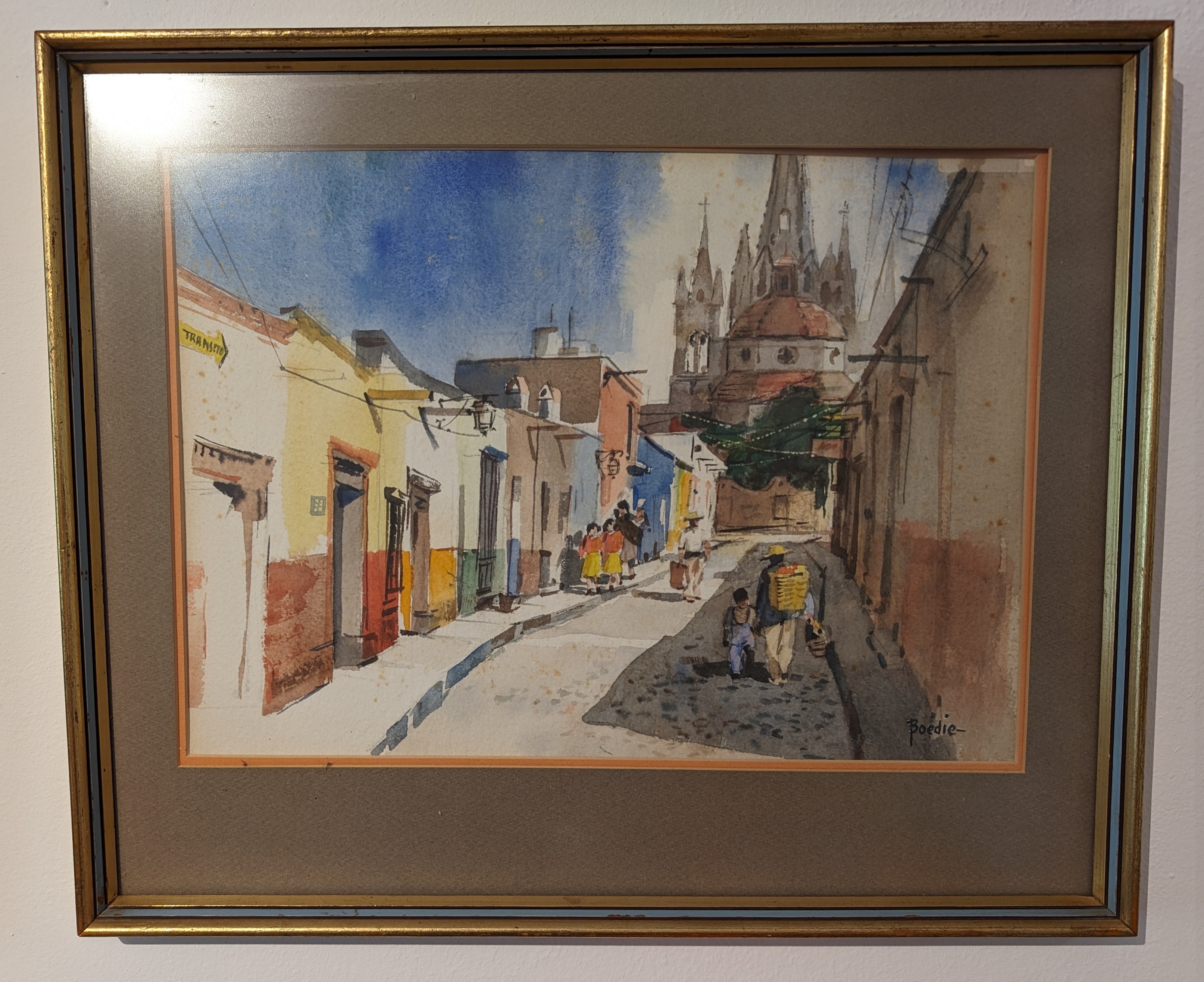
Arnold (Boedie) Boedeker
*
A few weeks after the painting's arrival I returned to San Miguel. During an afternoon walk, I saw a woman sketching at the Jardin. Taken by her drawing, I asked if she would be willing to sketch – you got it – a view of the Parroquia from Aldama. She agreed but only if I would take her and her friend for margaritas at Hank's (in those days Harry's). Deal! By the time I packed up to return home, not only did I have her piece – a striking charcoal drawing - but another from an artist at the art show at Parque Juarez, our local "Central Park."
Over the years, paintings, and other types of art depicting Aldama - which must include the Parroquia – have become my obsession. I have, today, over 70 of them, works by dozens of artists – formally trained and self-taught, realists and impressionists, San Miguelitos and expats. I have found them in galleries and parks, at street corners and gift shops, on the internet and by commission. Paintings include works by local artists such as Henry Vermillion, Al Sklaar, Donna Dickson, Al Morrow, Heather Collins, Juan Zaragoza, and Laurie Richards, all with their own distinctive interpretation. The growing assembly of paintings are on plywood, metal, turned bowls, napkins, and even a clay roofing tile. The mediums are equally diverse, including pen and ink, watercolor, charcoal, acrylic, color pencil, collage, and pastel.
Artists have worked from plein-air, others from photographs and some even from memory. One artist – who had never been to San Miguel – was so inspired by my collection that she made a trip to see the view in person. While most are original, those which are not have been acquired legitimately, not "borrowed" from the internet or copied.
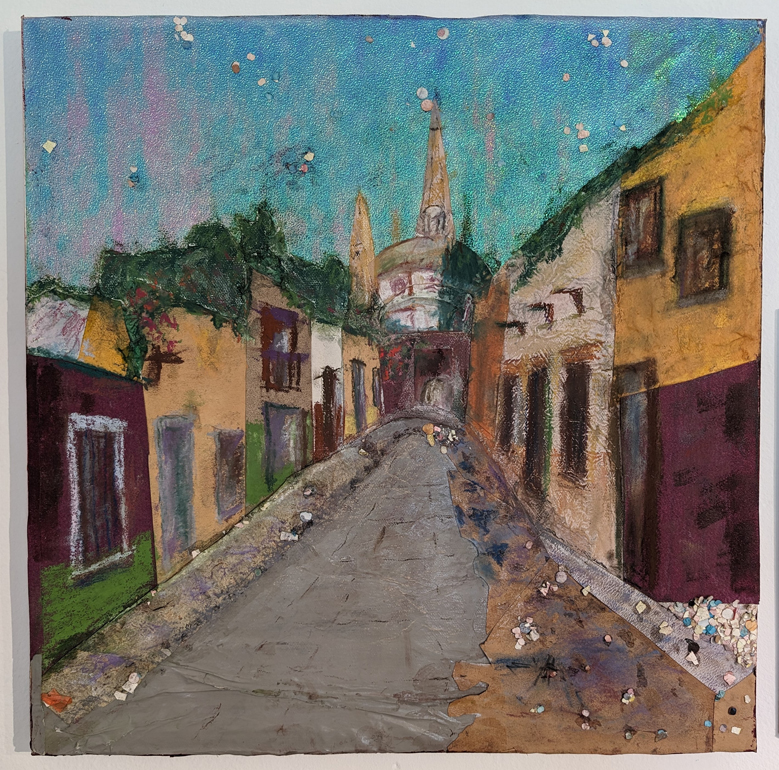
Paula Eiblum
*
My dining room today serves as the home for what I call the "Aldama Gallery." The collection is so numerous that many are not on permanent display. My mother and girlfriend suggest (to put it mildly) that I either get my "obsession" under control or get a bigger place. The "obsession" continues to win out.
A few years ago – just before the pandemic – I held a private showing of the "Aldama Gallery" to friends at my place in Madison, Wisconsin. I invited everyone in town that I knew had been to San Miguel – friends, acquaintances, and strangers. Guests were asked to share a favorite photograph of San Miguel. Not surprisingly, many were of this view.
My collection is, to me, more than images of an incredible view. It is a physical representation of my love for San Miguel. It also serves as a reminder of my personal collection of San Miguel experiences, stories, friendships, and memories.
Although my most recent trip to San Miguel was only a couple of months ago (and yes, I returned with three more paintings), I look forward to my next visit. I will, no doubt, make friends, collect stories and - of course - search for new works to complement the "Aldama Gallery." Having no space is of no consequence.
If you have a question, comment, or know of a piece that might belong in my gallery, please contact me at todd@barnettarchitecture.com. I would love to hear from you.
**************
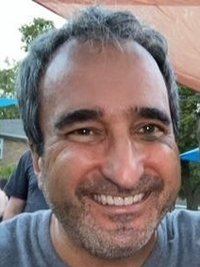
Todd Barnett is a coffee shop frequenter and architect in private practice in Madison, WI. When not in Madison or San Miguel, you may find him traveling the gravel roads of Iowa, photographing an aging barn or farmhouse.
www.barnettarchitecture.com
**************
*****
Please contribute to Lokkal,
SMA's online collective:
 ***
***
Discover Lokkal:
Watch the two-minute video below.
Then, just below that, scroll down SMA's Community Wall.
Mission

Visit SMA's Social Network
Contact / Contactar

